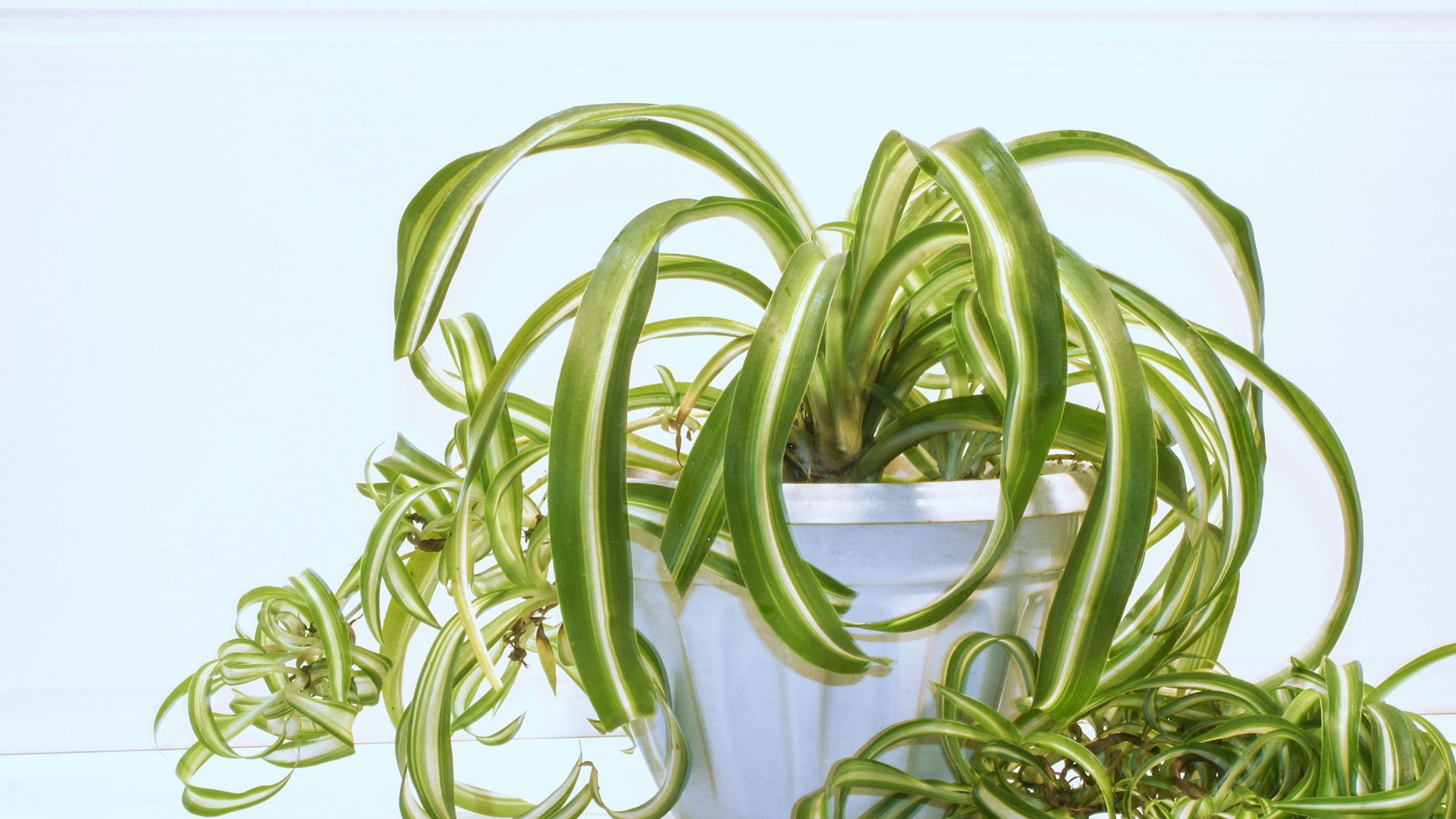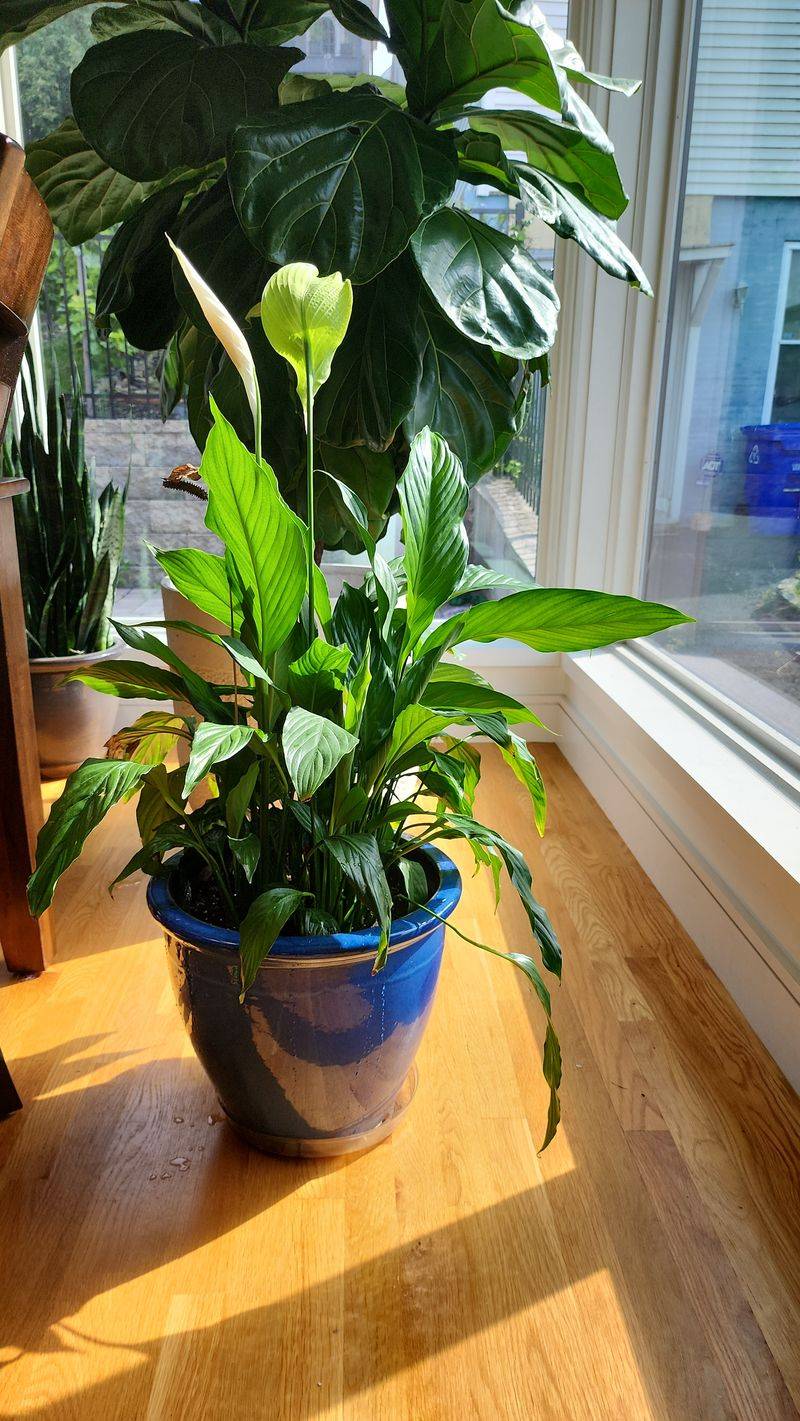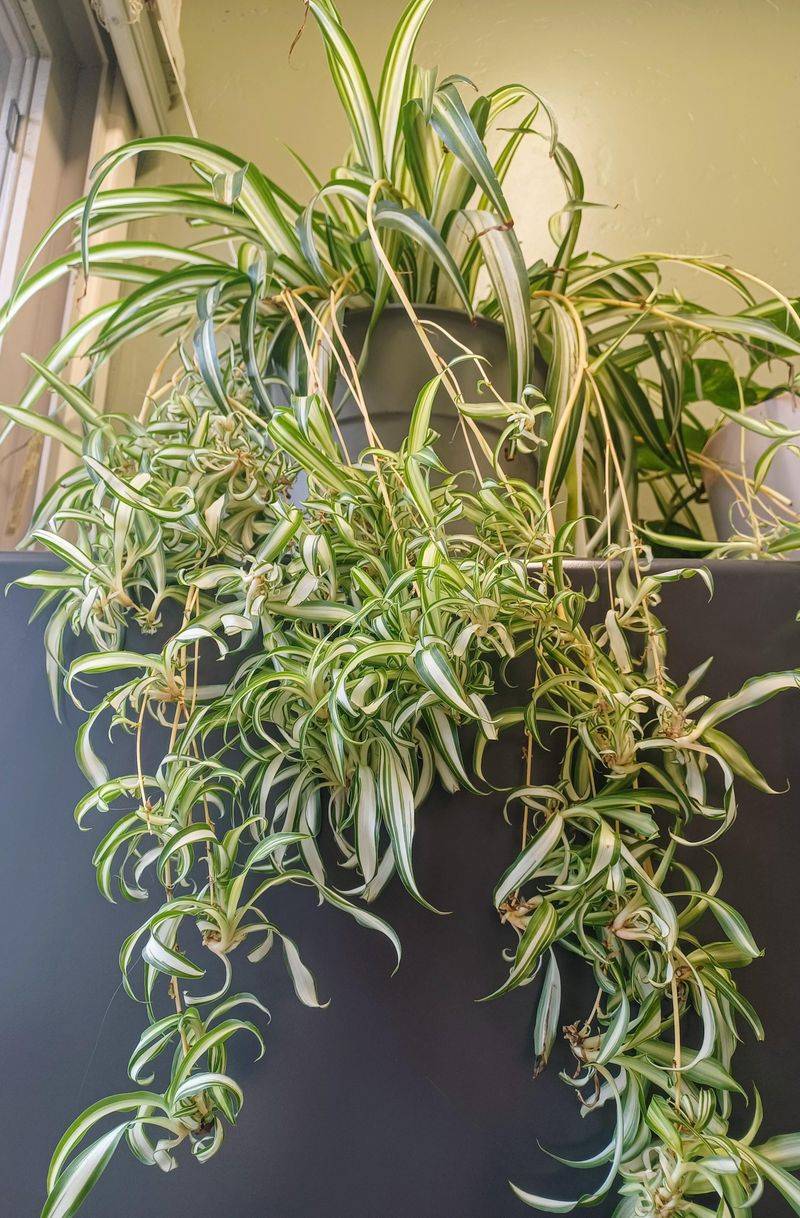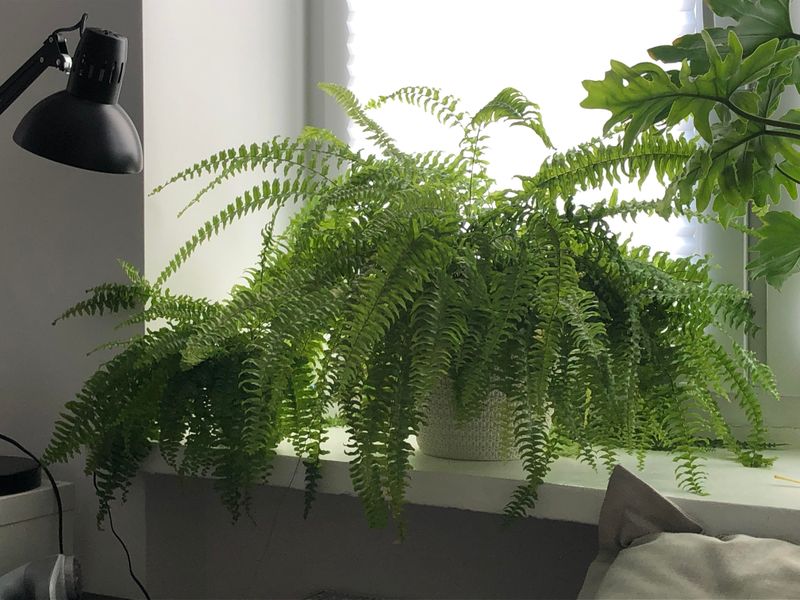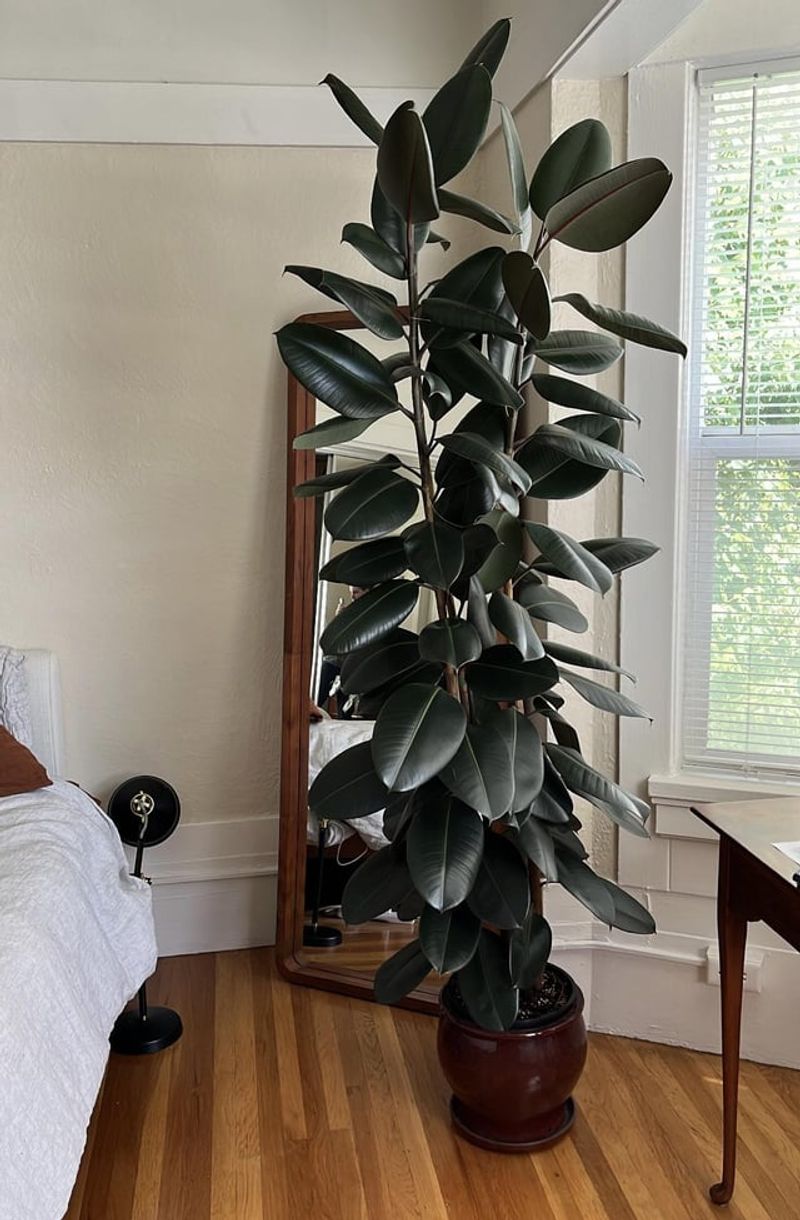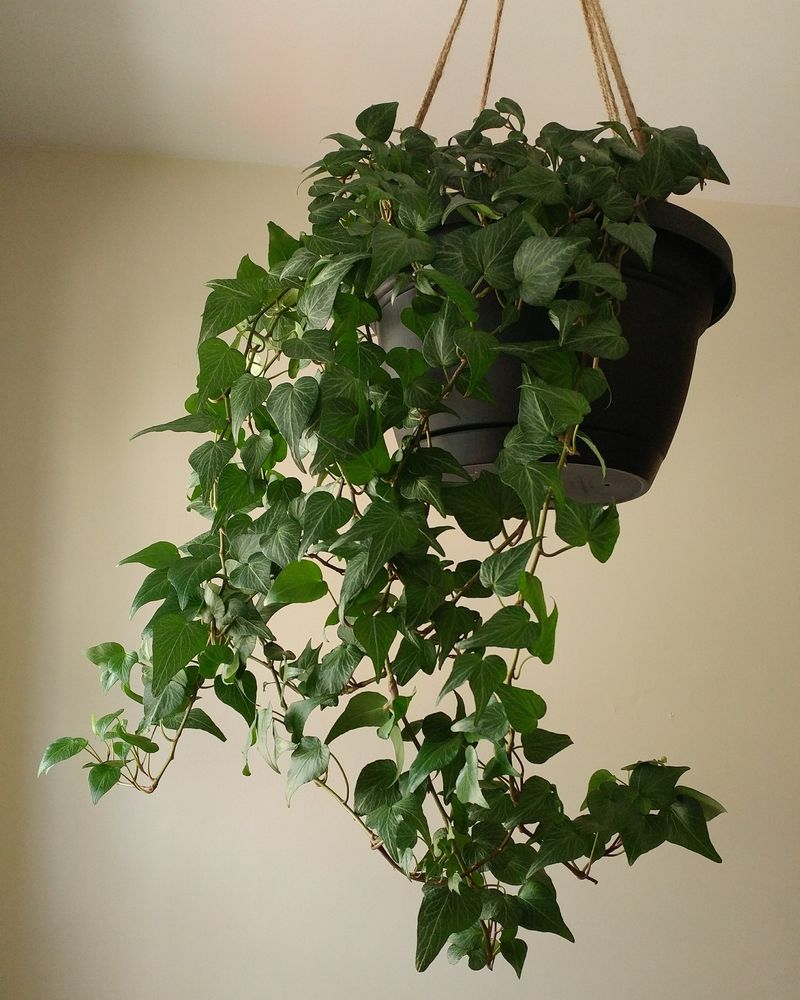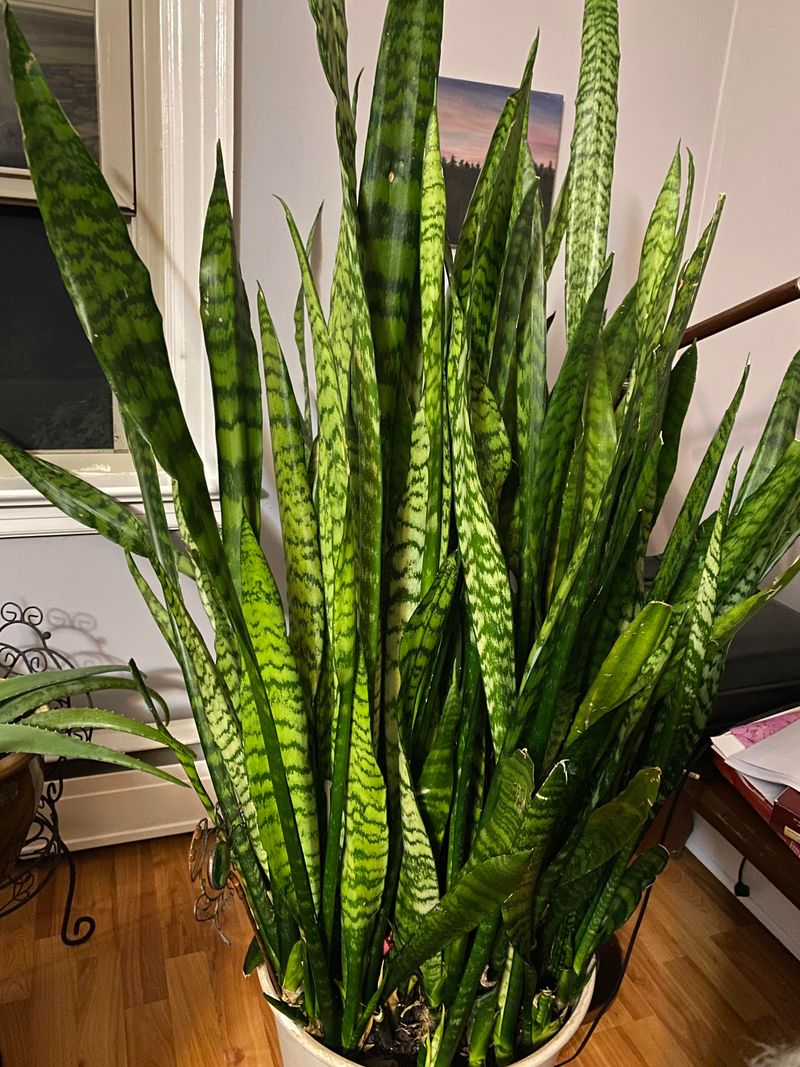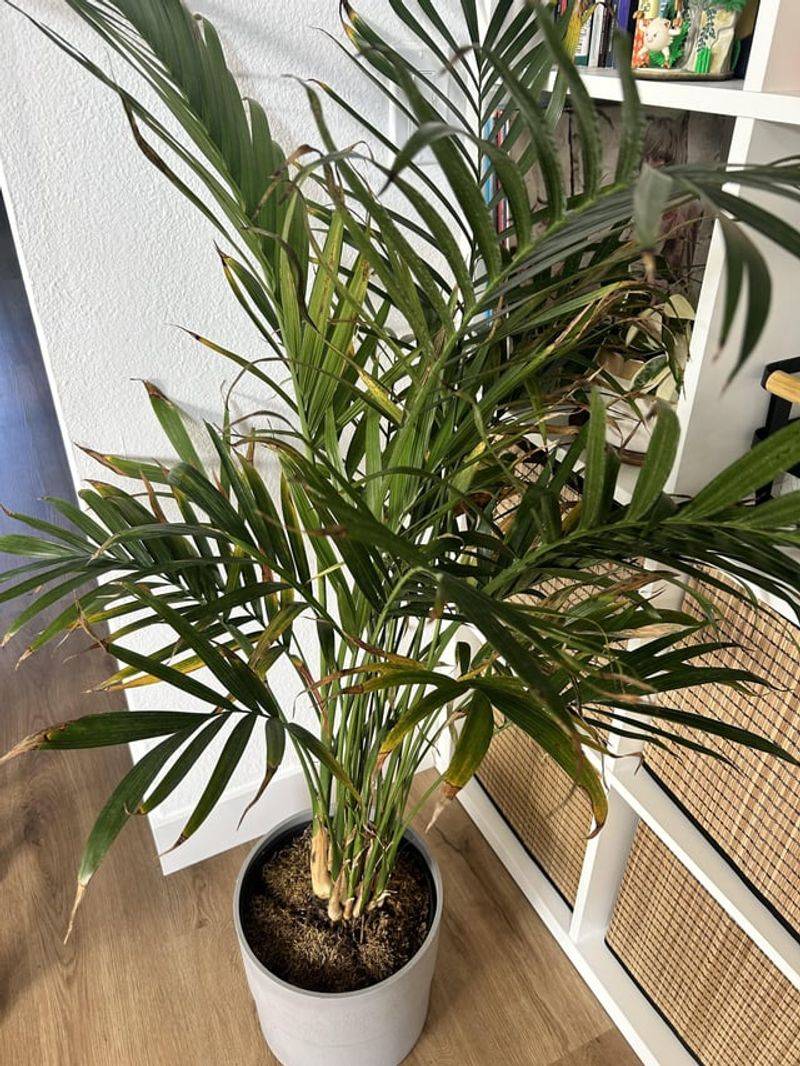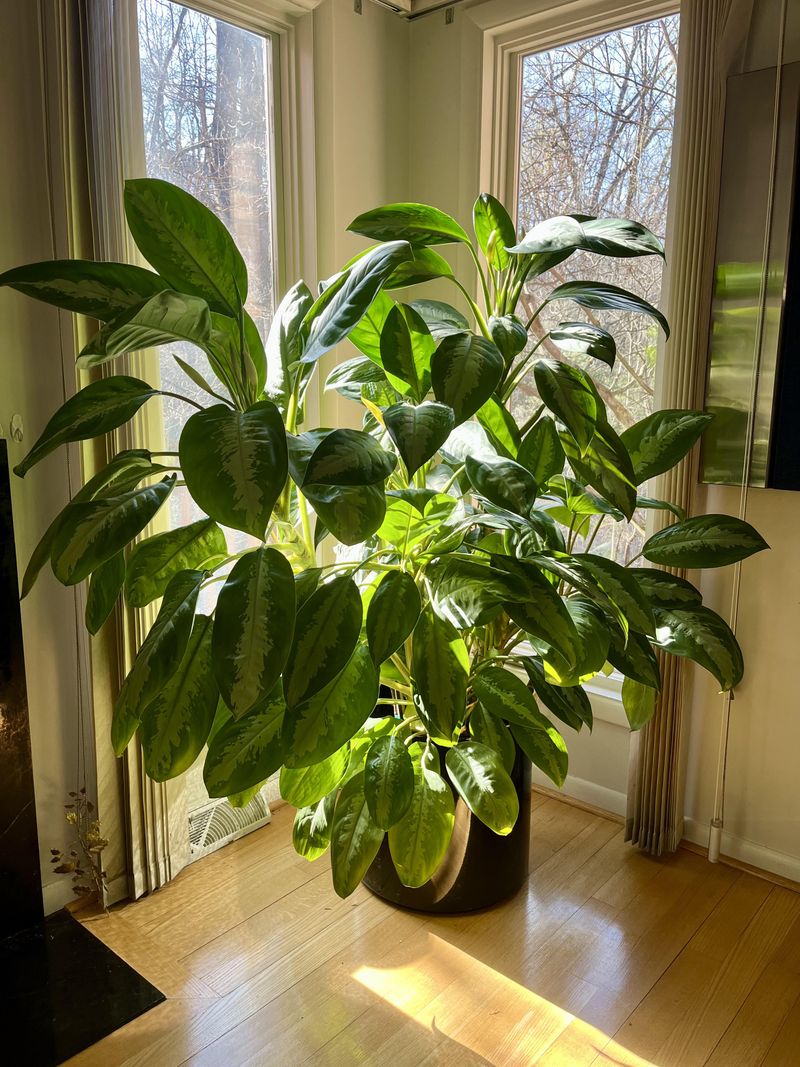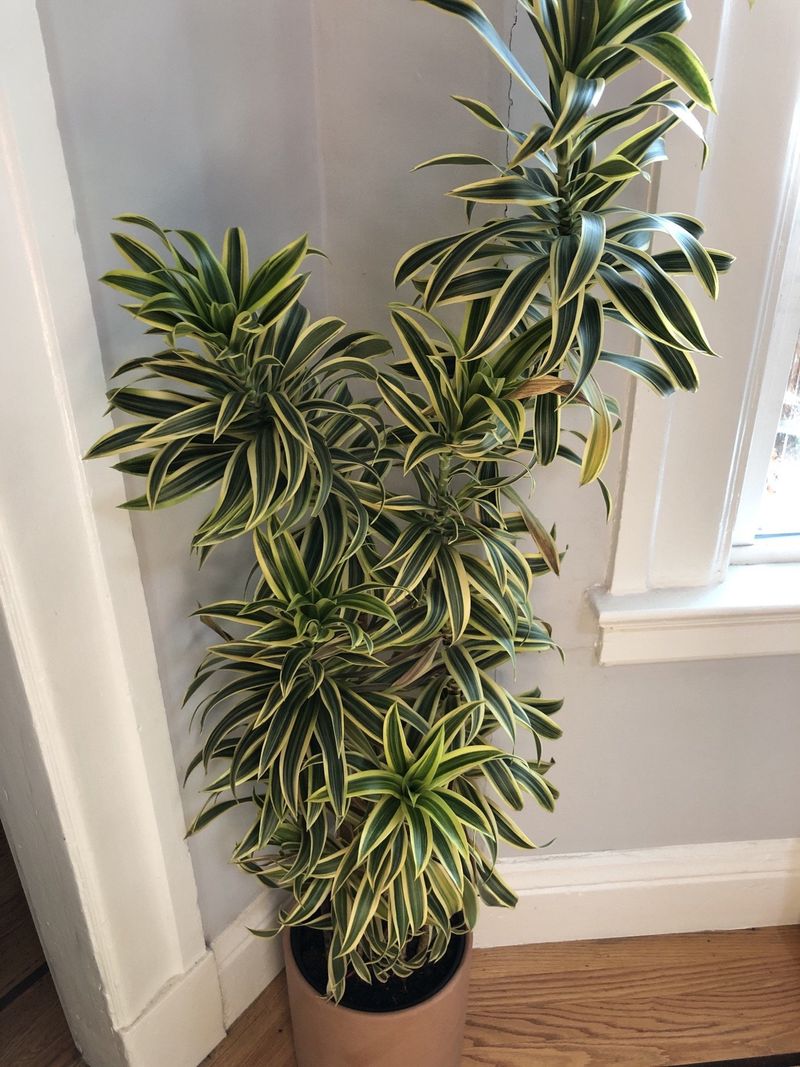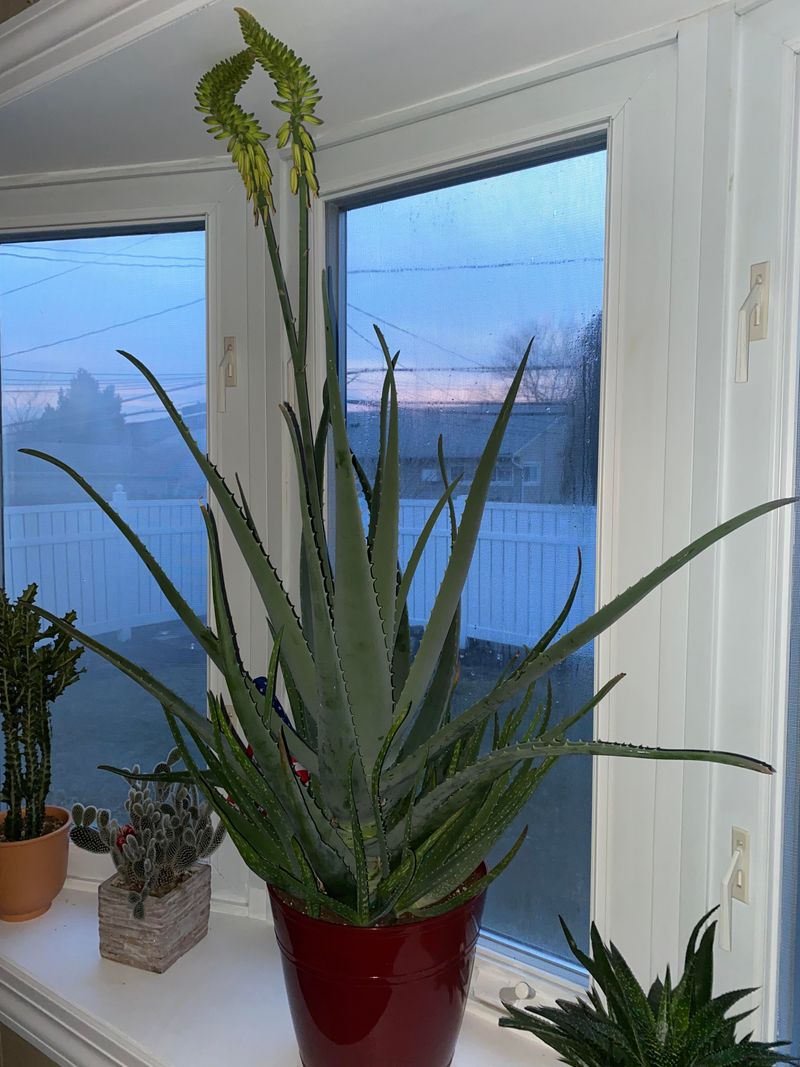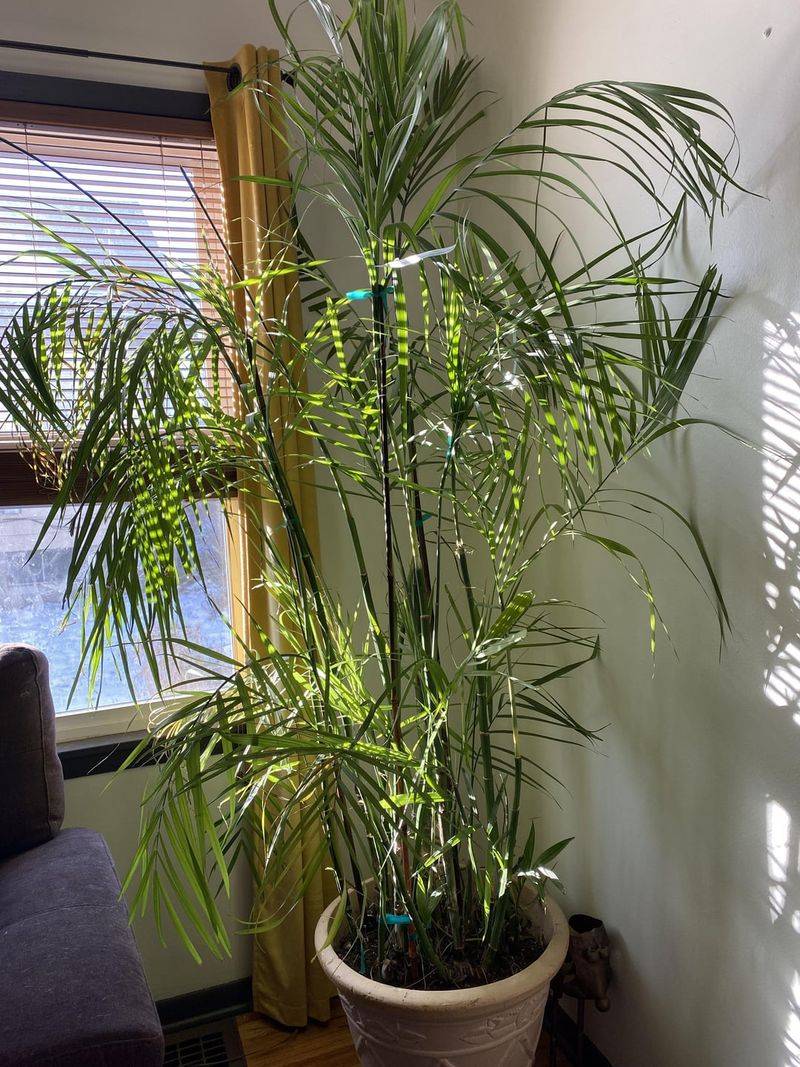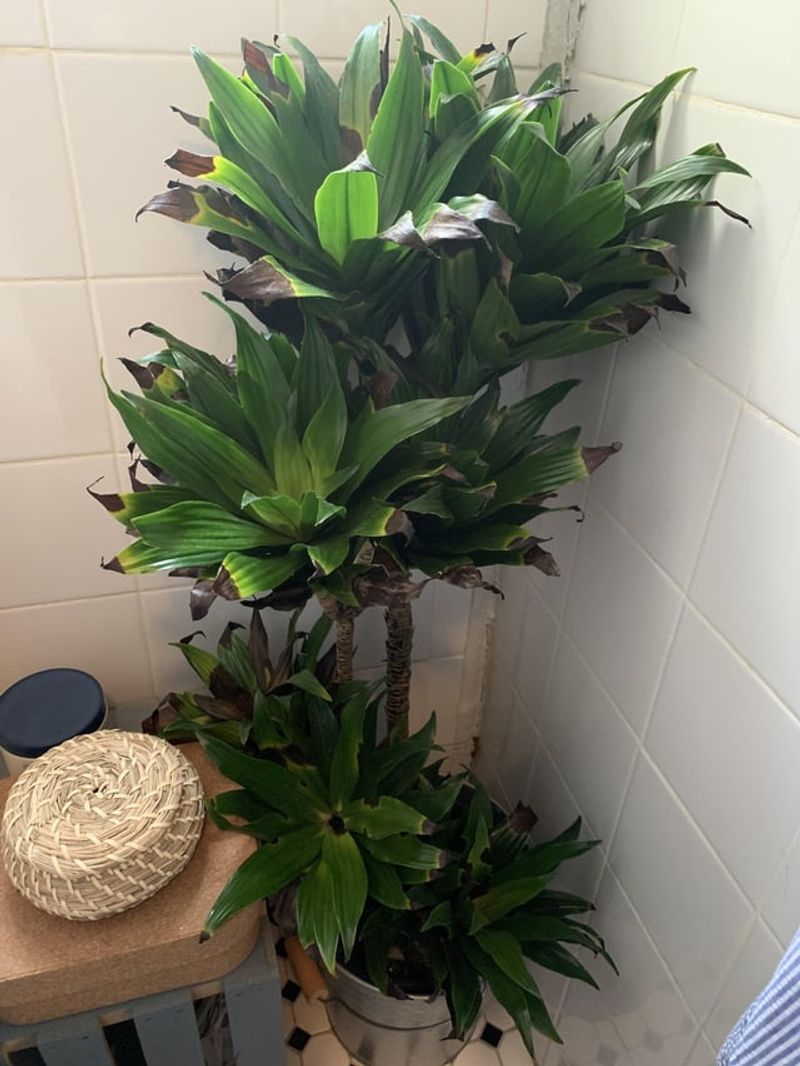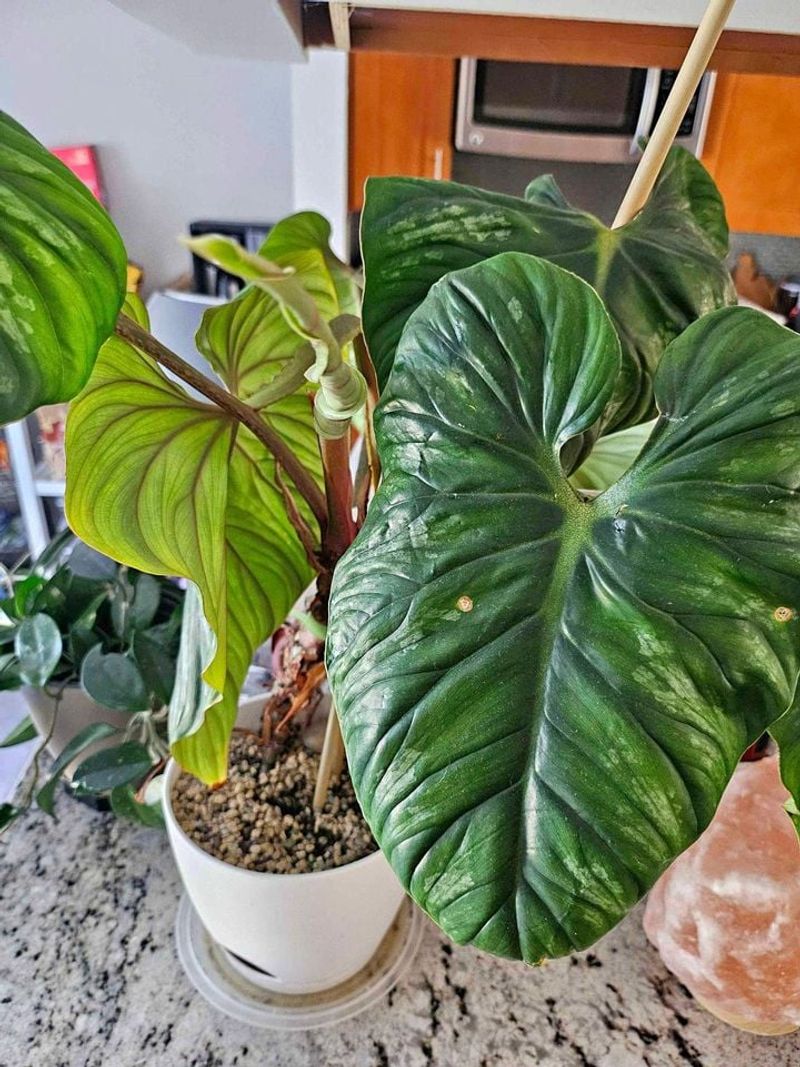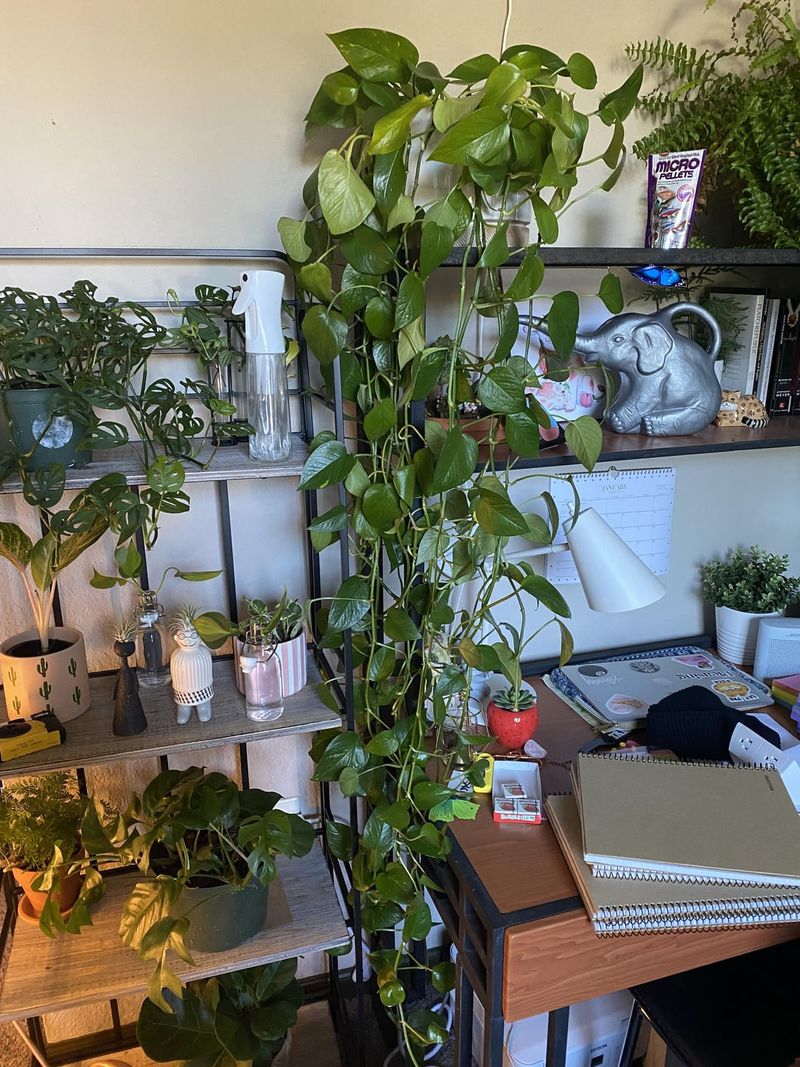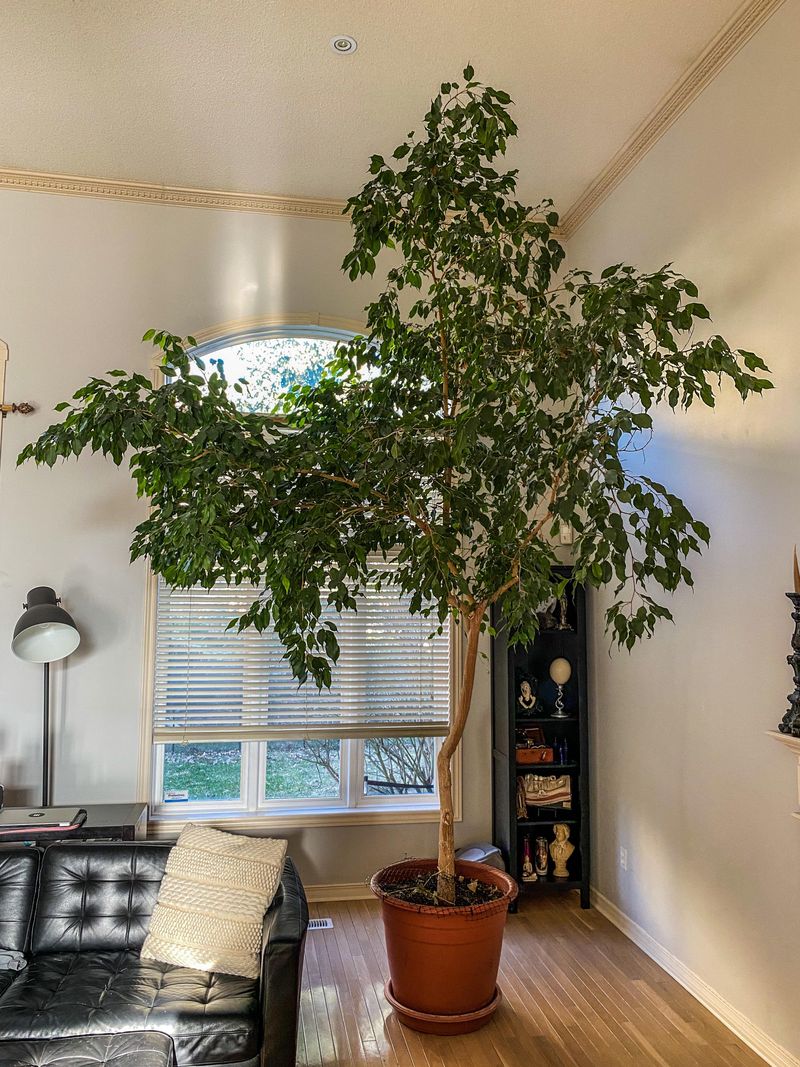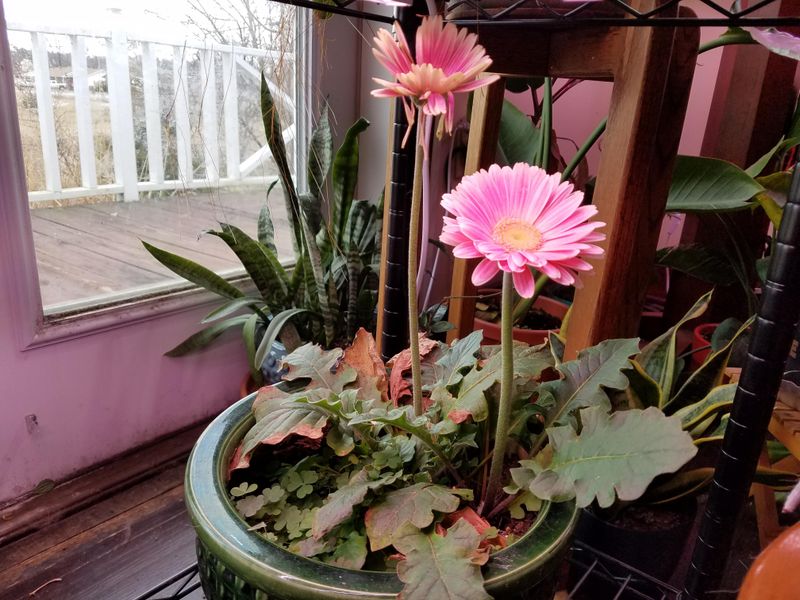Houseplants aren’t just eye candy—they’re air-cleaning champions in disguise. Some varieties trap dust on their leaves, while others filter toxins through roots and soil, making your home feel fresher with every breath.
Spider plants, peace lilies, and rubber trees are top picks for clearing the air. Their broad, textured leaves grab floating particles, and their natural processes quietly improve indoor air quality without any extra effort.
Adding greenery isn’t just about aesthetics—it’s a wellness upgrade. Fewer chemicals, less dust, and a touch of nature all in one? Yes, please. Your lungs (and your duster) will thank you.
1. Peace Lily
Known for its striking white flowers, this plant excels at removing common household pollutants from the air. NASA studies have shown it filters benzene, formaldehyde, and trichloroethylene.
The broad leaves act like natural dust collectors, trapping particles that would otherwise float around your home. Regular misting helps the plant perform this cleaning function even better.
My peace lily sits near my computer desk, and I’ve noticed significantly less dust accumulation on my electronics since placing it there. Just remember these plants are toxic to pets.
2. Spider Plant
Among the easiest plants to grow, spider plants feature long, arching leaves with distinctive white stripes. The leaves have tiny pores that absorb dust and other particles from surrounding air.
NASA research confirms these plants remove formaldehyde and xylene from indoor environments. An added bonus is their ability to produce baby plants you can share with friends.
Hanging a spider plant in the kitchen helped reduce the greasy dust that used to collect on my cabinets. They’re also non-toxic, making them safe for homes with curious pets and children.
3. Boston Fern
Featuring delicate, feathery fronds, Boston ferns create a stunning display while quietly cleaning your air. The large surface area of their leaves makes them particularly effective at trapping dust particles.
Research shows these ferns excel at removing formaldehyde, which can off-gas from furniture and carpeting. They also add humidity to dry indoor air, helping prevent respiratory irritation.
Placing one in my bathroom transformed the space – not only does it love the humidity, but the shower area stays noticeably cleaner with less dust settling on surfaces.
4. Rubber Plant
Featuring large, glossy leaves that easily wipe clean, rubber plants are excellent for trapping dust and purifying indoor air. Their waxy surface naturally collects airborne particles that would otherwise circulate through your home.
Beyond dust reduction, these sturdy plants filter out formaldehyde, a common indoor pollutant found in cleaning products and furniture. Caring for them is straightforward – moderate watering and indirect light are all they need.
After adding one to my living room, I noticed I needed to dust the TV stand less frequently. The dramatic size makes quite a statement too!
5. English Ivy
Hardy and adaptable, English ivy features small leaves that effectively filter airborne particles from your home. Studies from the American College of Allergy, Asthma & Immunology show it reduces indoor mold particles by up to 60%.
The plant’s ability to absorb formaldehyde makes it particularly useful in bathrooms and laundry areas where cleaning products are used. Growing it in hanging baskets maximizes its air-purifying capabilities.
During allergy season, keeping ivy near my bedroom window has noticeably reduced my morning sneezing fits. Just keep it away from pets, as the leaves can be toxic if eaten.
6. Snake Plant
Virtually indestructible, snake plants feature tall, sword-like leaves that stand upright, creating a striking architectural element. Their vertical growth means they don’t take up much floor space while still purifying your air.
Unlike most plants, snake plants release oxygen at night, making them perfect bedroom companions. The stiff leaves have a slightly waxy surface that traps dust and other airborne particles.
Even with my less-than-perfect plant care skills, my snake plant thrives in a dark corner of my home office, quietly reducing dust on my bookshelves. They’re practically impossible to kill!
7. Areca Palm
Graceful and feathery, areca palms act as natural humidifiers while filtering out dust and airborne toxins. Their delicate fronds provide extensive surface area for trapping particles floating through your home.
According to NASA’s Clean Air Study, these palms effectively remove formaldehyde, xylene, and toluene from indoor environments. During winter months, they help combat dry air that can irritate respiratory systems.
Growing up to 7 feet tall, my areca palm creates a stunning focal point in my living room. Friends always comment on how fresh the air feels in that space compared to the rest of my apartment.
8. Chinese Evergreen
Sporting patterned leaves in various shades of green, silver, and sometimes red, Chinese evergreens bring color while cleaning your air. Their broad leaves efficiently capture dust particles that would otherwise float around your home.
NASA researchers found these plants excel at removing benzene and formaldehyde from indoor air. The older the plant gets, the more effective it becomes at air purification.
Placing one near my entryway has noticeably reduced the amount of dust that settles on nearby surfaces. As a bonus, they thrive in low light, perfect for those darker corners of your home.
9. Dracaena
Available in many varieties with striking foliage patterns, dracaenas feature long, broad leaves that effectively trap dust and airborne particles. Their height and dramatic appearance make them statement pieces in any room.
Scientific studies show dracaenas remove formaldehyde, benzene, and trichloroethylene from indoor air. The plant’s efficiency increases as it grows larger, with some varieties reaching impressive heights.
Since adding a Dracaena marginata to my bedroom, morning dust allergies have significantly decreased. The plant seems to thrive on neglect, requiring minimal watering and care to look spectacular.
10. Aloe Vera
Famous for its healing gel, aloe vera also excels at improving indoor air quality. The thick, fleshy leaves absorb airborne pollutants while releasing oxygen, helping to keep your air fresh and clean.
Studies show aloe plants effectively filter formaldehyde and benzene, commonly found in household cleaning products. Unlike many houseplants, aloe actually releases oxygen at night, making it ideal for bedrooms.
During winter when my heating system runs constantly, keeping aloe plants around helps combat the dry, dusty air. As a desert plant, it requires minimal watering – perfect for forgetful plant parents!
11. Bamboo Palm
Reaching impressive heights, bamboo palms feature delicate, feathery fronds that efficiently filter dust and other particles from your air. Their extensive leaf surface area makes them particularly effective air purifiers.
NASA research ranks bamboo palms among the top plants for removing formaldehyde from indoor environments. They also add significant humidity to dry indoor spaces, helping prevent respiratory irritation.
My bamboo palm thrives in a corner that gets filtered light, creating a mini tropical oasis. During winter months, the increased humidity around the plant makes that area of my apartment noticeably more comfortable to breathe in.
12. Janet Craig Dracaena
Featuring glossy, dark green leaves that grow in rosette patterns, the Janet Craig variety of dracaena is particularly effective at filtering indoor air. The broad leaves provide ample surface area for trapping dust particles.
Research from NASA’s Clean Air Study shows this plant excels at removing trichloroethylene, formaldehyde, and benzene from indoor environments. Its low-maintenance nature makes it perfect for busy households.
Placing one near my TV significantly reduced the dust that used to accumulate on the screen. Even in my north-facing room with minimal natural light, this plant continues to thrive and clean the air.
13. Philodendron
Available in climbing or non-climbing varieties, philodendrons feature heart-shaped leaves that effectively trap dust particles. Their quick growth means they’re constantly producing fresh leaves to filter your air.
Studies show philodendrons are particularly good at removing formaldehyde from indoor environments. The plant’s easy-care nature makes it perfect for beginners or those who travel frequently.
My heartleaf philodendron has transformed my home office – not only does it add a touch of green, but I’ve noticed far less dust accumulating on my computer monitor. The trailing vines create a beautiful display as they grow.
14. Golden Pothos
Nearly impossible to kill, golden pothos features heart-shaped leaves often variegated with yellow or white. The slightly waxy leaf surface naturally collects dust and other airborne particles as air circulates around the plant.
Research confirms pothos excels at filtering formaldehyde, benzene, and carbon monoxide from indoor environments. As a bonus, it grows quickly, constantly producing new leaves to purify your air.
Hanging a pothos in my kitchen has made a noticeable difference in how much dust accumulates on countertops. For maximum air-cleaning benefit, I occasionally wipe the leaves clean with a damp cloth.
15. Weeping Fig
Elegant and tree-like, the weeping fig features small, glossy leaves on gracefully arching branches. These abundant leaves provide extensive surface area for trapping dust and airborne particles throughout your home.
NASA studies show weeping figs effectively filter formaldehyde, xylene, and toluene from indoor environments. Once established in a spot, they prefer not to be moved, as they can temporarily drop leaves when relocated.
After adding a weeping fig to my living room, I’ve noticed significantly less dust accumulating on nearby surfaces. The plant creates a beautiful focal point while quietly improving air quality day and night.
16. Gerbera Daisy
Bringing vibrant color to your space, gerbera daisies feature bright blooms above rosettes of dark green leaves. Beyond their cheerful appearance, these plants are powerhouse air purifiers, removing multiple toxins from indoor air.
Research shows gerberas excel at filtering benzene and trichloroethylene, chemicals commonly found in household products. Unlike many houseplants, they continue releasing oxygen at night, making them excellent bedroom companions.
When my seasonal allergies flare up, keeping gerbera daisies near my bedside seems to help me breathe easier through the night. Their colorful blooms last for weeks with proper care.

